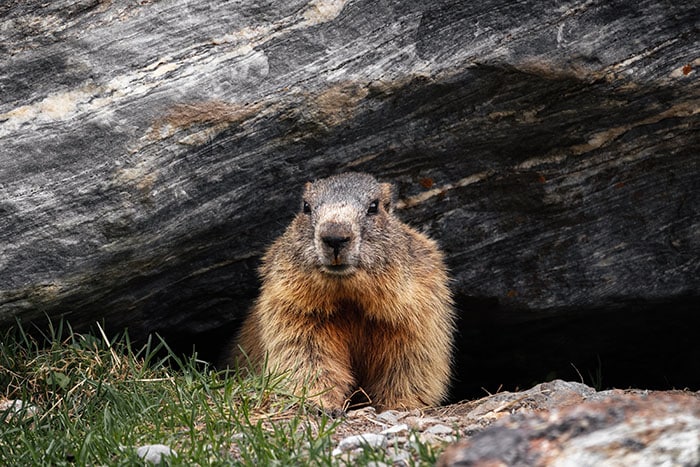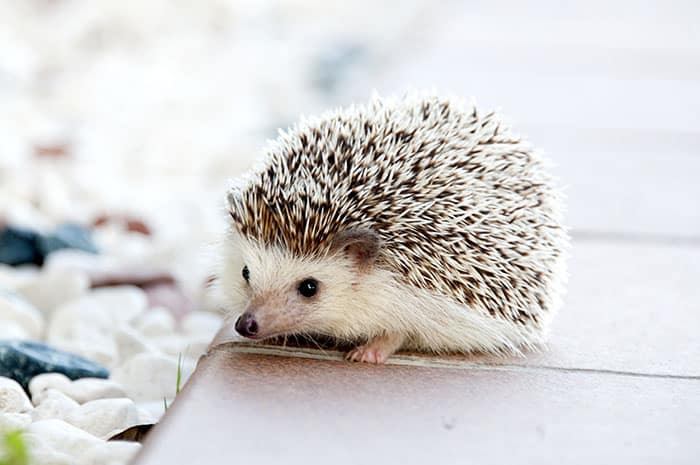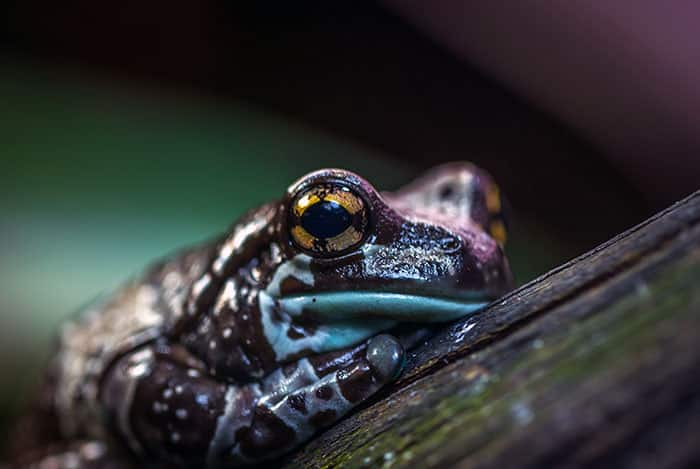In order to survive through periods of scarcity, many different species of animals choose to migrate, moving to warmer areas, but some choose to hunker down and hibernate.
Hibernation is an adaptation that looks different for many different animals, but it always serves the same purpose: to conserve energy and help them make it through cold months when resources are scarce.
Dormancy comes in many forms, and learning the differences between them is a great way to gain a better understanding of the creatures that we share our planet with.
What Is Hibernation?
Hibernation is a state of deep rest that allows animals to survive long periods of cyclical scarcity, such as winter. Animals use their stored energy more slowly than during other times of the year until it is time to emerge from the restful state in spring, when resources begin to be more readily available and they can replenish their energy.

During hibernation, the animal’s breathing, heart rate, and body temperature drop. Their metabolism also slows in order to conserve energy.
- The Science of Hibernation
- A Teacher’s Guide to Hibernation
- Hibernation Leveled Reading for Children
Do All Animals Hibernate in the Same Way?
Different animals hibernate in different ways. Some animals, true hibernators, experience such radical metabolic changes that it’s very difficult for them to wake from hibernation. Bears, widely known for their seasonal hibernation, are not true hibernators, as their state of rest is less intense.
Their body temperature does not drop as radically, and they can be woken from hibernation if there is a threat to their safety. Some smaller mammals, including chipmunks, experience an even less drastic hibernation, waking every few days to replenish their energy and warm their body.
Brumation, a similar concept to hibernation, is specific to amphibians and allows them to survive temporarily in cold temperatures. Select species can even produce their own natural antifreeze during periods of brumation.
- Surprising Facts About Hibernation
- Sleep and Hibernation
- Hibernation: How Animals Survive the Winter
Fat-Tailed Dwarf Lemur
After gorging themselves on food to sustain their bodies, fat-tailed dwarf lemurs spend up to seven months each year hibernating through the dry season of scarcity. They hibernate in tree holes where they live along the western coast of Madagascar.

- How Studying Lemur Hibernation Could Make Long-Distance Space Travel Easier One Day
- The Dwarf Lemur: A “Tail” of Torpor
Box Turtle
During brumation, box turtles burrow 10 to 15 centimeters down into soft soil to help regulate their body temperature. There, their metabolism slows and they are sustained by their stored body fat. For box turtles, brumation usually lasts between three and four months, after which they become more active again.

Groundhog
Sustained on their body fat and up to a pound of protein-rich food, groundhogs hibernate in their underground burrows for approximately three to six months, from late fall to early spring. Male groundhogs emerge first in order to seek out potential mates.

Common Poorwill
The common poorwill is a very unique bird. It is the first bird known to enter into torpor or hibernation. During the winter months, the common poorwill is inactive, experiences a 90% decrease in respiration, and lowers its body temperature to as low as 41 degrees. Rather than hibernating in trees, this bird hides itself among piles of rocks.
Hedgehog
Hedgehogs are true hibernators. When the weather starts to get cold, usually between late December and early January, they go into their thick, round hibernation nest, layered with leaves and other nesting materials, to keep their bodies warm. They will stay in their state of hibernation until the weather begins to warm again in late March.

Wood Frog
Wood frogs don’t go dormant underwater. Instead, they spend the colder months nested in the leaf litter on the forest floor. These frogs have a special protein that causes the water in their blood to freeze, growing ice between the cells.

Snail
Snails are interesting creatures, as unlike other animals that hibernate seasonally, they can hibernate any time there is extreme weather, be it hot or cold. Hibernating during periods of excessive heat is called estivation.

Snails use their mucus to seal off their shells and protect themselves from the elements. Some species of snail hibernate for extended periods of time, some as long as four to six months.
Skunk
Skunks, like bears, are not true hibernators. They can be roused when there is danger, and they may wake occasionally when the temperatures rise to 30 degrees or above to seek out food. For most of the cold months, though, skunks are much less active than they are during other parts of the year. They will stay in their dens for extended periods of time, eating less and sleeping more.
Snake
Snakes experience periods of brumation rather than hibernation. During the winter, snakes’ metabolism slows, and they take shelter underground as surface temperatures drop. The intensity and duration of a snake’s brumation depends on their location. During warm snaps, snakes may wake and venture out for food and water.

Bumblebee
Some species of bees, like bumblebees, hibernate. Hibernation comes at the end of the bees’ life cycle; as winter arrives, all bumblebees will either die or hibernate.

New queen bumblebees feed heavily to sustain themselves before they bed down in underground hibernation spots, where they wait until they can begin a new life cycle for their colony in the spring.
Bat
Lowering their body temperature and heart rate, bats enter into a state of torpor to push through long periods of cold. Torpor can last anywhere from a few hours to a month at a time, after which bats will emerge and replenish their nutrient stores.




